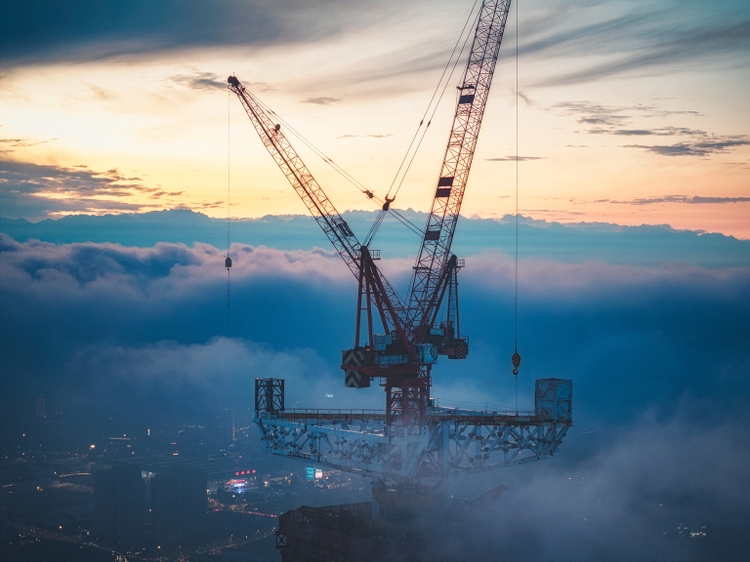Business
U.S. Manufacturing Surge Fuels Infrastructure Investment Boom

The United States is witnessing a substantial resurgence in manufacturing, with companies announcing over $1.2 trillion in investments between January and September 2025. This revival, driven primarily by sectors such as electronics, pharmaceuticals, and semiconductors, is poised to significantly boost infrastructure spending across the nation as the demand for construction materials and labor intensifies.
The increase in planned production investments indicates a shift towards bolstering domestic manufacturing capabilities. This trend aligns with a changing federal policy landscape and a growing emphasis on supply chain resilience among companies. As manufacturers expand their operations, the construction and operation of large-scale facilities will require extensive resources, presenting considerable opportunities for infrastructure developers.
Impact on Infrastructure Development
The planned investments in manufacturing are expected to create a ripple effect throughout various sectors. Infrastructure developers are likely to benefit from the heightened demand for materials, skilled labor, and energy resources necessary for constructing new manufacturing sites. With the focus on enhancing production capacity, construction projects are anticipated to accelerate, fostering further economic growth.
According to industry analysts, the strategic investments span multiple states and regions, highlighting the national commitment to revitalizing manufacturing. States that have traditionally been manufacturing hubs, as well as emerging markets, stand to gain from this influx of capital. The anticipated growth in infrastructure spending is likely to enhance job creation and stimulate local economies.
Shifts in Corporate Strategy
The manufacturing revival is not merely a response to market demands but also reflects a broader strategic shift among corporations. Many companies are prioritizing supply chain resilience, a trend that has intensified due to recent global disruptions. As firms reassess their operations, there is a clear movement towards localizing production, which can mitigate risks associated with overseas supply chains.
The current economic climate, influenced by both federal policies under the Trump Administration and global economic factors, has created a favorable environment for manufacturing investments. This policy shift aims to make the U.S. more competitive in the global market while also ensuring that domestic production meets national needs.
As the U.S. embraces this manufacturing renaissance, the implications for infrastructure spending will likely be profound. The intersection of manufacturing growth and infrastructure development presents a unique opportunity for the country to strengthen its economic foundation and enhance its competitive edge on the world stage.
The coming months will be critical in determining how these investments will materialize and the long-term benefits they will yield for the U.S. economy.
-

 Lifestyle2 months ago
Lifestyle2 months agoWinnipeg Celebrates Culinary Creativity During Le Burger Week 2025
-

 Health2 months ago
Health2 months agoMontreal’s Groupe Marcelle Leads Canadian Cosmetic Industry Growth
-

 Science2 months ago
Science2 months agoMicrosoft Confirms U.S. Law Overrules Canadian Data Sovereignty
-

 Education2 months ago
Education2 months agoRed River College Launches New Programs to Address Industry Needs
-

 Technology2 months ago
Technology2 months agoDragon Ball: Sparking! Zero Launching on Switch and Switch 2 This November
-

 Technology1 week ago
Technology1 week agoDiscord Faces Serious Security Breach Affecting Millions
-

 Science2 months ago
Science2 months agoTech Innovator Amandipp Singh Transforms Hiring for Disabled
-

 Technology2 months ago
Technology2 months agoGoogle Pixel 10 Pro Fold Specs Unveiled Ahead of Launch
-

 Science2 months ago
Science2 months agoChina’s Wukong Spacesuit Sets New Standard for AI in Space
-

 Technology2 months ago
Technology2 months agoWorld of Warcraft Players Buzz Over 19-Quest Bee Challenge
-

 Business2 months ago
Business2 months agoDawson City Residents Rally Around Buy Canadian Movement
-

 Education2 months ago
Education2 months agoAlberta Teachers’ Strike: Potential Impacts on Students and Families
-

 Technology1 week ago
Technology1 week agoHuawei MatePad 12X Redefines Tablet Experience for Professionals
-

 Business2 months ago
Business2 months agoNew Estimates Reveal ChatGPT-5 Energy Use Could Soar
-

 Science2 months ago
Science2 months agoXi Labs Innovates with New AI Operating System Set for 2025 Launch
-

 Technology2 months ago
Technology2 months agoInnovative 140W GaN Travel Adapter Combines Power and Convenience
-

 Technology2 months ago
Technology2 months agoFuture Entertainment Launches DDoD with Gameplay Trailer Showcase
-

 Technology2 months ago
Technology2 months agoGlobal Launch of Ragnarok M: Classic Set for September 3, 2025
-

 Technology2 months ago
Technology2 months agoNew IDR01 Smart Ring Offers Advanced Sports Tracking for $169
-

 Technology2 months ago
Technology2 months agoArsanesia Unveils Smith’s Chronicles with Steam Page and Trailer
-

 Science2 months ago
Science2 months agoNew Precision Approach to Treating Depression Tailors Care to Patients
-

 Business2 months ago
Business2 months agoBNA Brewing to Open New Bowling Alley in Downtown Penticton
-

 Technology2 months ago
Technology2 months agoHumanoid Robots Compete in Hilarious Debut Games in Beijing
-

 Health2 months ago
Health2 months agoGiant Boba and Unique Treats Take Center Stage at Ottawa’s Newest Bubble Tea Shop










